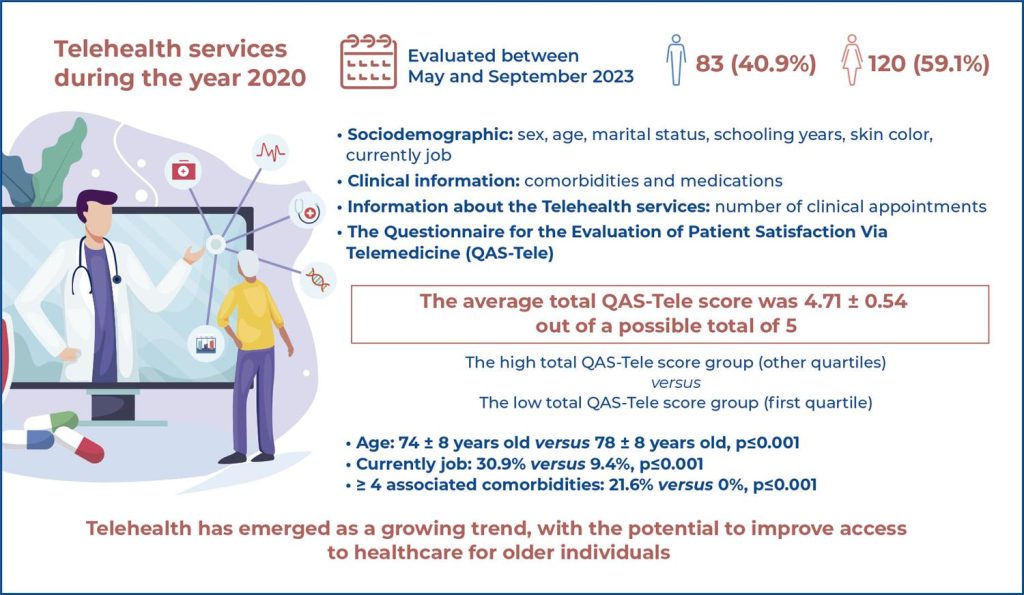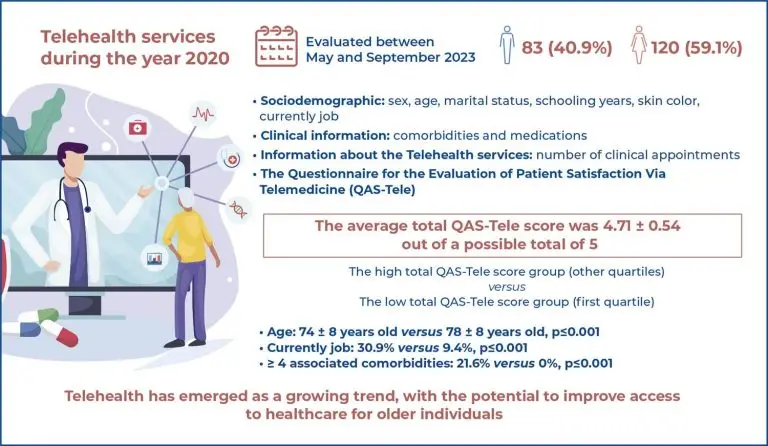einstein (São Paulo). 22/Sep/2025;23:eAO1578.
Satisfaction with a telehealth service among older adults
DOI: 10.31744/einstein_journal/2025AO1578
Highlights
■ The average total QAS-Tele score was 4.71±0.54 out of 5.
■ Higher satisfaction was reported by older adults in the younger age range.
■ Higher satisfaction was reported by individuals currently working.
■ Higher satisfaction was reported by individuals with a higher number of comorbidities.
ABSTRACT
Objective:
This retrospective observational study analyzed satisfaction with a telehealth service in older individuals living in a metropolitan city in Brazil.
Methods:
Sociodemographic, clinical, and telehealth service details (number of clinical appointments for each patient during a year) were collected. Satisfaction with the telehealth service was evaluated using the Questionnaire for the Evaluation of Patient Satisfaction Via Telemedicine (QAS-Tele) in 203 older individuals (59.1% women; 75.6±7.9 years old). A subanalysis was performed with patients divided into two groups: low score on QAS-Tele (first quartile) and high score on QAS-Tele (other quartiles).
Results:
The questionnaire items and average total QAS-Tele score suggested high patient satisfaction (average total score of 4.71±0.54 out of 5). The patients with high QAS-Tele scores had a lower average age (74.4±7.8 versus 78.3±7.5 years, p≤0.001) and a higher proportion of individuals currently working (30.9% versus 9.4%, p≤0.001) and of individuals with four or more associated comorbidities (21.6% versus 0%, p≤0.001) than patients with the low QAS-Tele scores.
Conclusion:
Patients in the present study reported high satisfaction with the telehealth service. Higher satisfaction with the telehealth service was reported by older adults in a younger age range, by individuals currently working, and by individuals who had a higher number of comorbidities. These findings suggest the importance of considering these factors in the planning of telehealth services in older individuals.
[…]
102



